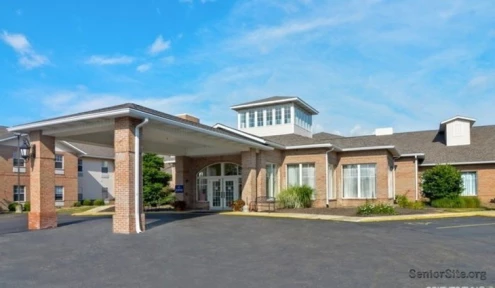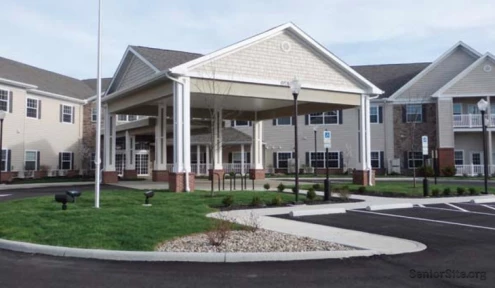Family caregivers in Texas provide 3.2 billion hours of care annually, saving the state $34 billion in healthcare costs. This dedication comes with significant personal consequences, as approximately 20% of caregivers develop depression.
Family caregiving involves managing doctor’s appointments, assisting with daily tasks, and sometimes providing round-the-clock support. These responsibilities often lead to physical and emotional exhaustion. Respite care for elderly addresses this specific challenge by offering temporary relief when caregivers need a break.
The services available through respite care range from in-home assistance to short-term stays at care facilities lasting up to 30 days. These programs typically include help with household tasks, medication management, and personal care. This assistance allows caregivers to rest, complete errands, or spend time with family and friends.
This guide examines the process of finding and arranging appropriate respite care. It covers the types of services available, assessment of care needs, selection of providers, and preparation for a smooth transition. The information aims to help both caregivers and their elderly family members receive proper support.
Understanding Respite Care Options
Respite care provides temporary relief for family caregivers while ensuring elderly loved ones receive continuous professional care. Research indicates more than a third of family caregivers desire respite services, yet only 14% actually receive this support. A clearer understanding of available respite options could help close this significant gap.
Types of respite care for elderly
Respite services are available in several formats to address various caregiving situations:
- In-home respite care: Professional caregivers visit the home to deliver companion services, homemaker assistance, personal care, or skilled medical support. This arrangement allows seniors to remain in familiar environments while caregivers take necessary breaks.
- Adult day centers: These facilities provide daytime supervision, structured activities, and sometimes limited medical assistance, often operating from churches or community centers. Seniors gain social interaction opportunities while family caregivers work or attend to personal responsibilities.
- Residential respite: Short-term stays at assisted living facilities or nursing homes lasting from overnight to several weeks. These environments offer round-the-clock professional care services.
- Informal respite: Friends, family members, or volunteers who temporarily care for seniors while regular caregivers handle errands or take short breaks.
How respite care supports caregivers
The demands of caregiving rarely cease—respite care delivers crucial relief. Studies show caregivers utilizing respite services report reduced stress levels and improved overall health and well-being.
Respite breaks allow caregivers to focus on self-care, manage personal needs, and avoid burnout. Many caregivers during the COVID-19 pandemic identified the loss of scheduled respite as their most significant challenge, demonstrating how essential these breaks are for maintaining balance.
The exposure to professional caregiving techniques often provides family members with new strategies and approaches for supporting their elderly loved ones.
Common misconceptions about respite care
Several misunderstandings prevent families from utilizing respite services:
Myth: Respite care is only for emergencies or end-of-life situations. Reality: Respite care functions as a flexible, everyday solution that families can plan in advance.
Myth: It’s too expensive for most families. Reality: Various payment options exist, including sliding-scale fees, Medicaid waivers, and nonprofit grants.
Myth: Using respite care indicates failure as a caregiver. Reality: Taking breaks improves caregiving quality by preventing burnout and allowing caregivers to return refreshed.
Myth: Elderly loved ones reject new caregivers. Reality: With proper introduction and planning, most seniors adjust well and may enjoy the additional social interaction.
Assessing Caregiving Needs Before Seeking Respite
Before arranging respite care for elderly family members, caregivers should evaluate both their own needs and their loved one’s care requirements. This initial assessment helps identify the most appropriate support options and ensures positive outcomes for everyone involved.
Identifying necessary care levels
Documentation of specific care needs provides essential guidance for respite providers. Respite care experts recommend evaluating several key areas:
- Supervision requirements – Some seniors need constant monitoring while others require only periodic check-ins. The level of supervision directly impacts the type of respite service needed.
- Personal care assistance – Many elderly individuals need help with bathing, dressing, hygiene tasks, or eating. These requirements determine the qualifications necessary for respite caregivers.
- Medical needs – Medication management, mobility assistance, and specialized medical support might require providers with specific training and certifications.
A detailed care needs summary helps providers understand exactly what assistance is required, resulting in better-matched respite services and improved care outcomes.
Choosing between home-based and facility care
The location of respite services significantly affects both seniors and their caregivers:
In-home respite allows elderly individuals to remain in familiar environments, potentially reducing anxiety and confusion. This option proves particularly valuable when seniors struggle with environmental changes or rely on specialized medical equipment that cannot be easily transported.
Out-of-home options like adult day centers or residential facilities offer different advantages. These settings typically provide more comprehensive support systems, social interaction opportunities, and specialized care equipment. They also allow caregivers to experience complete breaks from caregiving responsibilities while at home.
Determining optimal respite frequency
Evaluating your own caregiver stress levels helps determine how often respite is needed. Feelings of emotional exhaustion, health neglect, or resentment toward others who could help but don’t indicate a need for regular breaks.
Respite frequency should align with individual caregiving situations. While some caregivers function well with brief weekly breaks, others require extended relief periods. The critical factor is establishing a sustainable pattern that prevents burnout while maintaining quality care.
Respite care represents a necessity rather than a luxury—it forms an essential component of sustainable caregiving that benefits both caregivers and their elderly family members over time.
Finding and Evaluating Respite Care Providers
The search for qualified respite care providers requires systematic research and careful evaluation. After identifying your specific needs, the next step involves locating potential caregivers who can deliver appropriate care for elderly family members.
Using respite care directories
Several national and local resources help connect families with respite care services. The ARCH National Respite Network maintains a database of providers throughout the country that families can search by location and service type. Similarly, the Eldercare Locator links older adults and their caregivers with Area Agencies on Aging that offer respite assistance in their communities. For region-specific options, State Respite Coalitions and Lifespan Respite Programs typically maintain detailed provider listings tailored to local communities.
Essential provider interview questions
Preparing specific questions helps identify the most suitable respite care provider:
- “What selection, training, and supervision processes do you use for workers? Do you conduct background checks?”
- “Which specific tasks can your respite workers perform? Are they authorized to administer medications or assist with medical procedures?”
- “What is your staff-to-resident ratio?” This number indicates how much individual attention your family member will receive.
- “What protocols exist for emergency situations and unexpected developments?”
- “What are your fee structures and payment methods? Do you offer financial assistance options or accept insurance?”
Verifying qualifications and reputation
Confirm that providers hold proper state licensing (where applicable) and carry adequate insurance coverage. Check whether they maintain bonding for additional financial protection. Contact provided references and review testimonials from other families who have used their services. When evaluating agencies, ask about their screening protocols for caregivers and whether they complete the seven required database checks along with criminal background screenings.
Testing services before commitment
Before making long-term arrangements, visit any facility under consideration. During these visits, observe whether current residents appear content, well-cared for, and engaged in activities. A short trial stay provides a low-pressure opportunity for your loved one to experience the environment firsthand. This preliminary period allows both of you to determine if the provider truly meets your needs before entering a more extensive arrangement.
Planning the Transition to Respite Care
The shift to respite care for an elderly family member requires careful preparation from all involved parties. Successful transitions depend on clear communication and thoughtful planning to minimize anxiety and ensure comfort for seniors.
Discussing respite care with elderly family members
Timing significantly impacts how these conversations unfold. Experts recommend choosing quiet moments when both parties feel relaxed and receptive. Caregivers should honestly explain their own needs while reassuring seniors of their continued support and commitment. Emphasizing the temporary nature of respite arrangements helps reduce resistance, as does explaining how both parties benefit—caregivers receive needed breaks while seniors receive quality care.
Conversations about respite care should highlight positive aspects such as social opportunities and engaging activities. Many elderly individuals ultimately enjoy the change of environment and new interactions despite initial hesitation. Patience during these discussions proves essential, as does involving seniors in the decision-making process whenever possible. Arranging preliminary visits to potential respite locations often helps build familiarity and reduce anxiety.
Packing essentials for facility-based respite care
For respite care outside the home, several items help maintain comfort and continuity:
- Weather-appropriate clothing with name labels when possible
- Personal toiletries and regular grooming supplies
- Medications in original containers with clear instructions
- Necessary mobility aids including walkers or canes
- Familiar comfort items such as photographs, favorite blankets, or meaningful keepsakes
- Personal entertainment options like books, puzzles, or music devices
Caregivers should also prepare important documentation including emergency contacts, medical information, and insurance details for the respite provider.
Facilitating a positive initial experience
Maintaining familiar routines helps seniors adjust to new environments. Daily schedules that mirror home patterns provide security during transitional periods. Regular communication through calls or visits proves particularly important during initial adjustment phases.
Starting with shorter respite periods before gradually extending to longer stays helps build confidence in the new arrangement. This stepped approach allows seniors to adjust gradually while giving caregivers opportunities to address concerns.
Adjustment periods vary considerably among individuals. Caregivers often experience guilt when arranging respite care, but research indicates that taking necessary breaks ultimately improves long-term caregiving quality and sustainability.
Conclusion
Respite care provides a critical support system for family caregivers while ensuring elderly loved ones receive professional care during breaks. Studies consistently demonstrate that regular respite periods reduce caregiver stress levels and improve outcomes for both caregivers and seniors receiving care.
Successful respite arrangements depend on thorough planning, transparent communication with all parties, and careful preparation. The initial transition may present challenges, but evidence shows that scheduled breaks strengthen overall caregiving capacity. Most caregivers report returning to their responsibilities with renewed energy and perspective after using respite services.
The research highlights an important reality – seeking assistance represents a strategic approach to sustainable caregiving rather than a failure to meet responsibilities. Knowledge about respite options, assessment methods, and transition techniques allows families to select appropriate support systems for their specific situations. When caregivers prioritize their own health through periodic breaks, they significantly improve their ability to provide quality care over the long term.
FAQs
Q1. What is respite care for the elderly? Respite care provides temporary relief for family caregivers by offering professional care services for elderly loved ones. It can include in-home assistance, adult day centers, or short-term stays at care facilities, allowing caregivers to rest, run errands, or attend to personal needs.
Q2. How do I know if I need respite care? You may need respite care if you’re feeling emotionally drained, neglecting your own health, or experiencing resentment towards others who could help but don’t. Regular breaks are essential for maintaining your well-being and providing sustainable care for your loved one.
Q3. What types of respite care are available? There are several types of respite care, including in-home care where professionals come to your home, adult day centers for daytime supervision, residential respite for short-term stays at care facilities, and informal respite provided by friends or family members.
Q4. How can I find a reliable respite care provider? To find a reliable provider, use local and national respite care directories, conduct thorough interviews, check licenses and reviews, and arrange trial visits. Resources like the ARCH National Respite Network and Eldercare Locator can help you connect with reputable providers in your area.
Q5. How do I prepare my loved one for respite care? Prepare your loved one by having an honest conversation about the benefits of respite care, involving them in decision-making, and focusing on the positive aspects. For out-of-home care, pack familiar items and essentials. Start with shorter respite periods and maintain regular communication to ease the transition.












